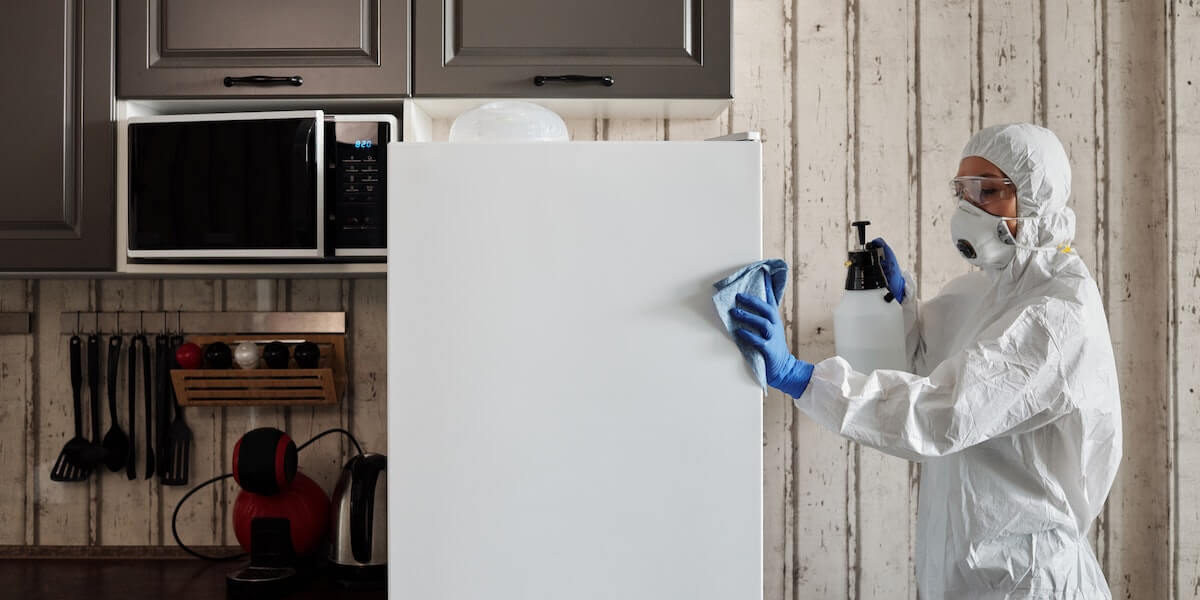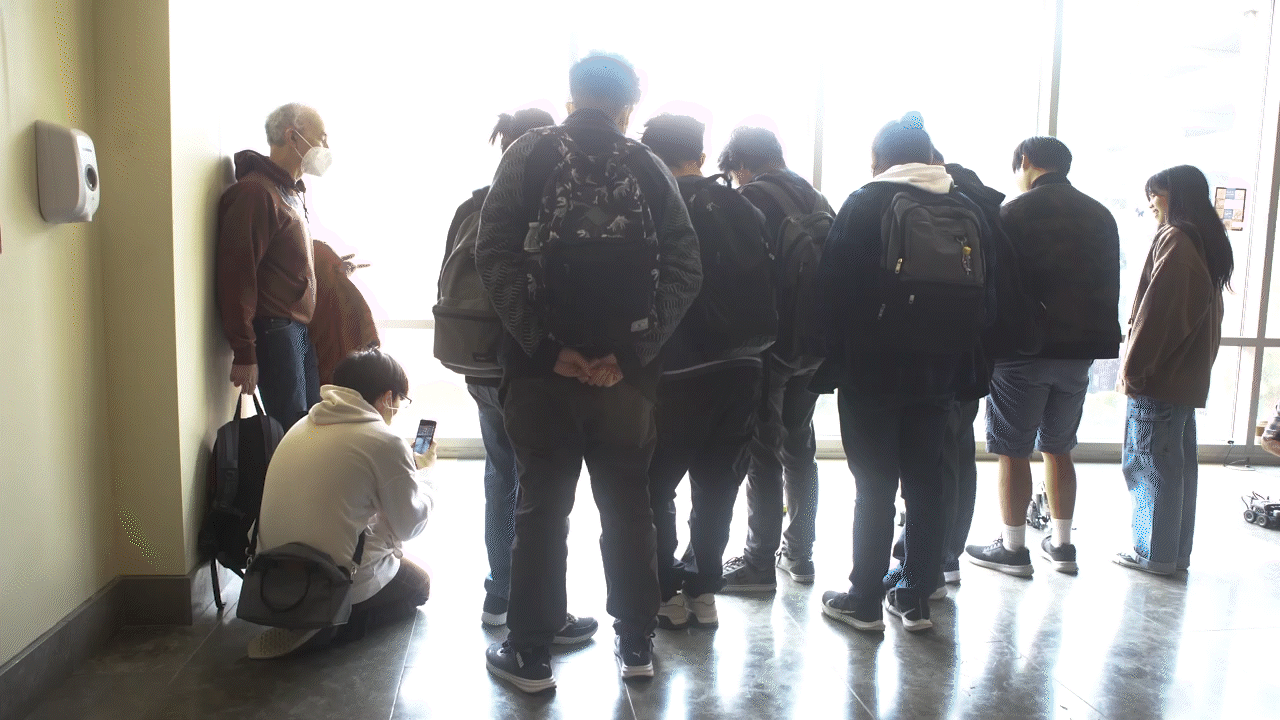
PHOTO/Pexels, Matilda Wormwood.
COVID-19 is the virus of the decade for several reasons: one of which is that, as a new virus, researchers are constantly discovering more about how it impacts individuals, how it spreads, how it can be disinfected and how it can be attacked.
Over the summer, faculty in the USC Viterbi Department of Aerospace and Mechanical Engineering (AME) worked with a cohort of master’s students to look further into four topics to help further understanding COVID-19 and how exposure to it can be mitigated. These topics included UV and chemical disinfection; PPE disinfection; design of a PAPR (mask) device; and finally, how different conditions change recommendations on distancing. AME Assistant Professors Ivan Bermejo-Moreno and Mitul Luhar, Research Assistant Professor Anita Penkova and Smith International Professor in Mechanical Engineering SK Gupta served as advisors on these projects.
Said Bermejo-Moreno, who chaired the students’ final presentations in August: “The goal of the program was to identify challenges related to COVID-19 and the impact that engineering could have, propose and develop potential solutions and promote collaborative remote research.”
Disinfection Robot
Three different variations of disinfection robot exist right now: chemical disinfection, UV disinfection or a combination of both. AME master’s students Jerry An, Nimish Deogaonkar and Shiyue Qian focused on developing a chemical disinfection robot, building on the ADAMMS model already adapted to perform UV disinfection tasks back in April. The team was advised by Director of the Center for Advanced Manufacturing at USC Viterbi SK Gupta. In the future, the team hopes to combine the two technologies into one interface and software system, so a single robot can perform both tasks as needed.
The key elements of the chemical disinfection technology was the spray mechanism design—determining how the device that emits the chemical spray should be built—and the assurance system—which monitors whether or not target areas were coated with a sufficient amount of spray. The assurance system was largely informed by motion planning technology and verified by imaging technology that assessed fluid coverage on the surface.
The hardware for the robot includes a spray sense camera to detect spray droplets and a nozzle, from which the spray is released. The team programmed the robot’s software to ensure it will spray the minimum amount of required fluid onto surfaces, by making sure that the overlapping of the spray pattern is optimized. The nozzle was carefully selected to produce a fine mist. All of the specifications, including speed and coating thickness, can be defined by the user.
Currently, the robot only has a single end effector, meaning only one device can be attached to the robotic arm and used to interact with the external environment at a time. Ultimately, the team hopes to build a multi-end effector, which can support the integration of the UV light disinfection capability and allow for multi-modal disinfection. The team also hopes to scale the project to disinfect larger areas and objects.
How to Safely Dispose of PPE
Face masks have been a controversial piece of the COVID puzzle since day one. Recommendations vary across all levels—local, state and federal—and variables like fabric and fit can undermine the safety factor of an everyday cloth mask. At the same time, disposable masks are thrown out with the regular trash, create potential biohazardous materials not yet anticipated and properly dealt with.
AME master’s students Wing-Sum Lai, John Michael Mitchell and Marissa Renteria researched current mask trends, with a focus on disinfection methodology. Using existing data, for example the fact that disposable masks stay on different surfaces for different periods of time and that increasing temperature can decrease the surface survival time, the team devised an alternate disinfection process to air drying masks in the sun after rinsing them or UV disinfection.
Their solar disinfection box uses common items easily found at most hardware stores, including mirrors, a cardboard box, copper tape and duct tape. While it is cheaper, safer and more customizable than a UV box, UV boxes are still preferred for smaller products such as face masks for more efficient disinfection times.
The solar disinfection box, by contrast, can require up to 36 minutes of disinfection time in Los Angeles during the summer and up to 4.5 hours in the winter, based on initial research compiled by the team. The team was advised by Henry Salvatori Early Career Chair Mitul Luhar.
A Different Type of Mask, For Less
By now, nearly everyone has heard of an N95 mask—the mask deemed most effective at keeping COVID-19 particles out, but few are familiar with PAPRs, Powered Air Purifying Respirators that use a blower to force air through filters and into the breathing zone of the wearer. Because this creates a personalized environment for the wearer of the mask, the PAPR is said to be more comfortable than an extremely restrictive mask, while adding an extra layer of protection between the wearer and potential germs in the air.
With the goal of innovating the existing PAPR designs, AME students Fangzhou Zhang and Bonian Ren, advised by Research Assistant Professor Anita Penkova, wanted to find a more cost efficient, comfortable, durable and customizable solution for PAPR use. One of aspect of this was to make the PAPR design more versatile, recognizing that once the pandemic is over, PAPRs will not be of much use to their owners.
PAPRs are considered a good option in terms of maintaining safe breathing space because of their completely sealed environment and a filter system with high filtration efficacy. They are also easy to disinfect. The student team built on these features, while making the PAPRs adaptable for other uses such as snorkeling, machining and firefighting.
The design they came up with consists of two main parts: a transparent cover in the front and a rubber ring that mimics the outline of a human head to provide a perfect seal. There are also ports available to attach additional components.
The team suggests using polycarbonate for the main mask material, citing it will work better in comparison to other materials including acetate and PETG because of better impact protection and heat resistance. To create these, the team plans to take advantage of the 3D printers on campus. With a bulk printing order of 100,000 masks, the team estimates that the total cost, including materials and labor, would be about $125 per mask, much less expensive than the hundreds of dollars usually spent for a PAPR.
Understanding How COVID-19 Particles Spread in Different Climates
A few public health recommendations have become widely known: stay six feet apart and wear a mask to minimize the spread of COVID-19 droplets. However, little is known about how consistent these recommendations would remain in different situations. For example, what are optimal HVAC settings? How long can a group stay in a room and minimize the risk of being infected?
Master’s students Tianyi Bai and Francis Del Campo, advised by Assistant Professor Ivan Bermejo-Moreno, used fluid flow simulations to consider the answers to these questions. Among their findings: six feet might not be enough, particularly when a person is yelling or coughing. With an injection velocity of 65 feet per second, a droplet might reach a distance of 6 feet in less than one second, similar to how a COVID-19 droplet might behave after a person coughs. The students did note the simulation accounted for significant lateral dispersion of the particles across the distance of spread.
To fully understand how various conditions impact COVID-19 spread, the team cited the need for high performance computing facilities. For now, they emphasize that it might be important to be further than six feet apart, depending on how large the droplets are and additional variables.
Published on September 11th, 2020
Last updated on September 11th, 2020











